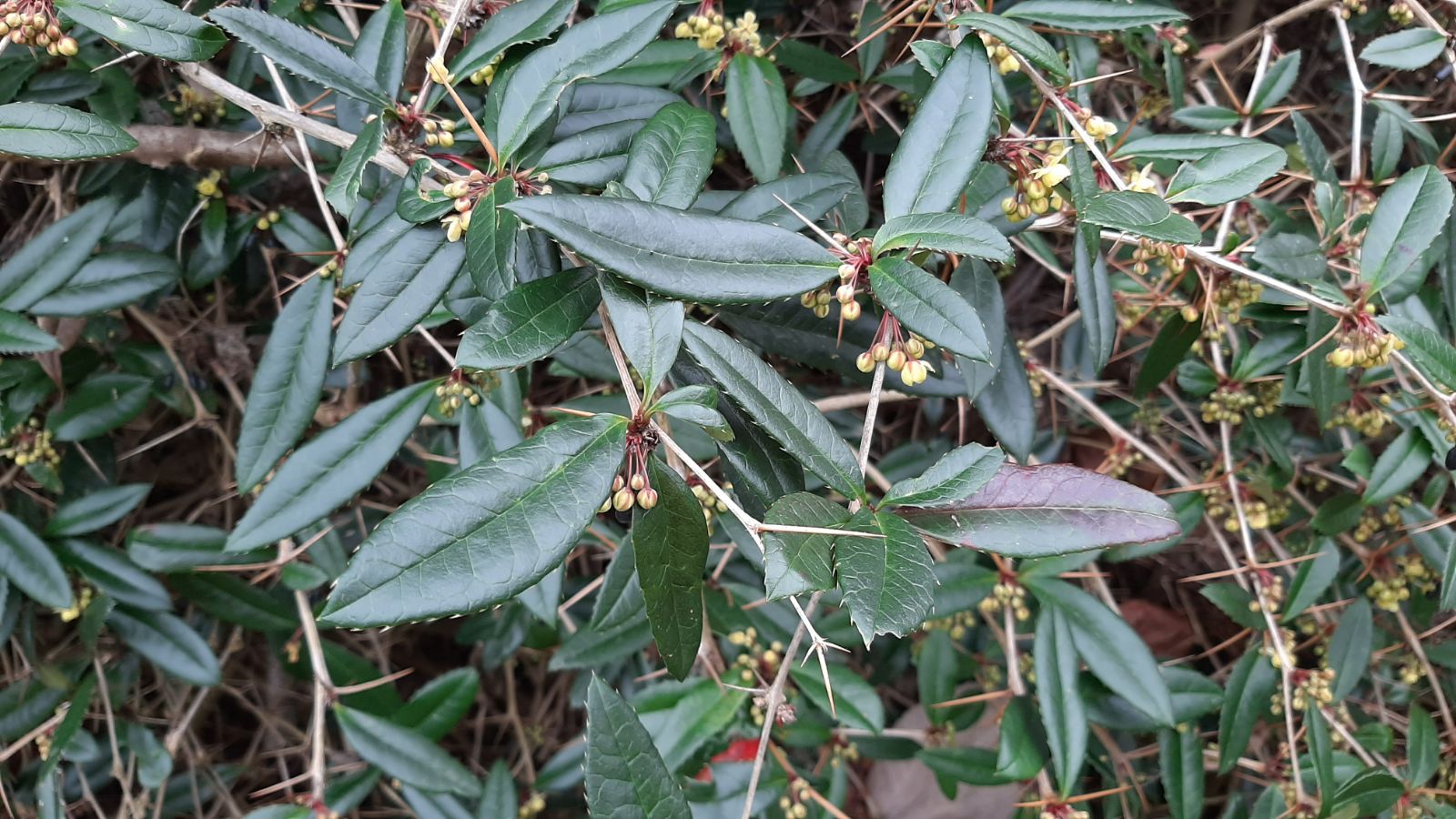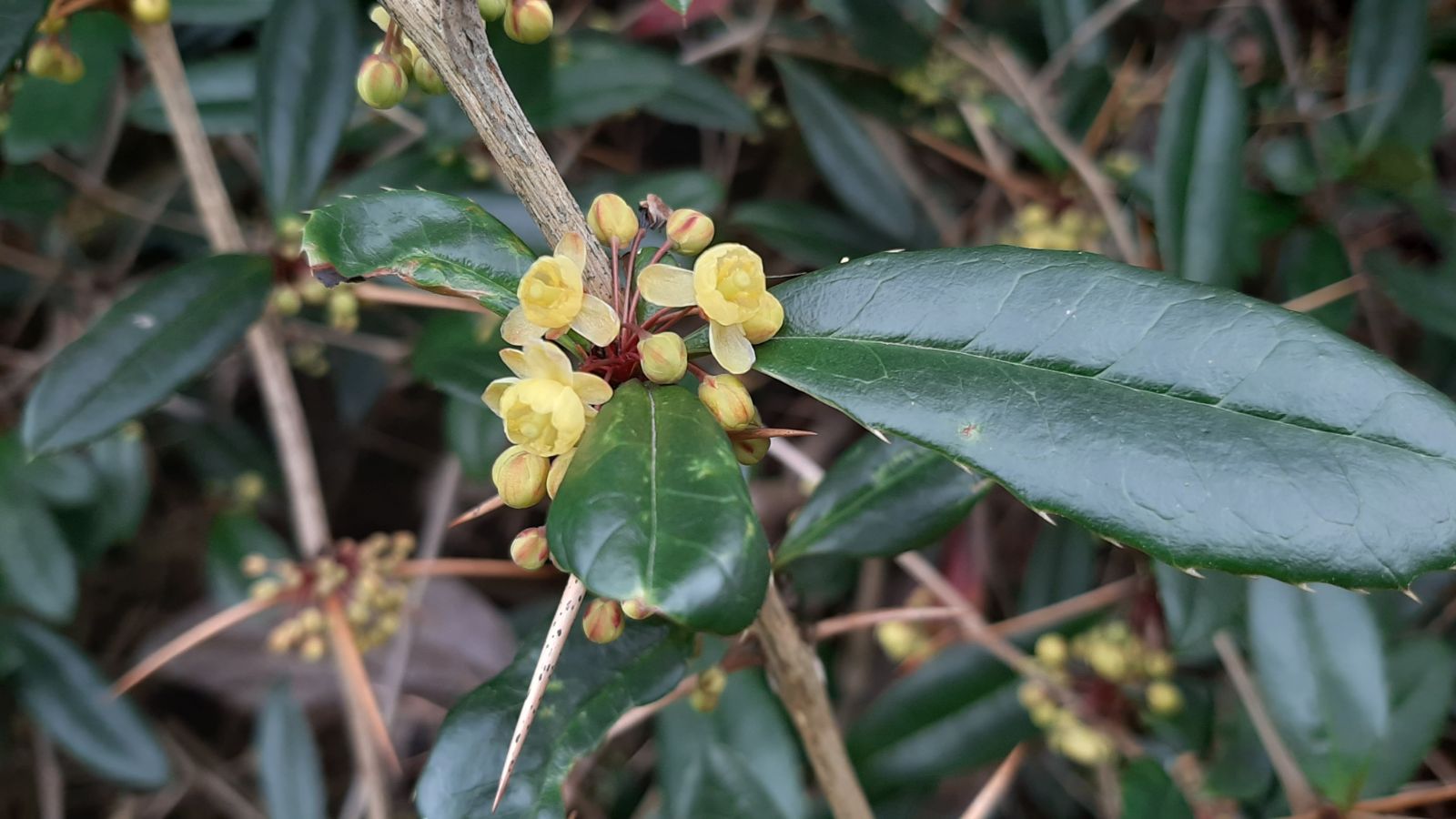Berberis julianae
Credits
Article from Bean's Trees and Shrubs Hardy in the British Isles
Recommended citation
'Berberis julianae' from the website Trees and Shrubs Online (treesandshrubsonline.
Genus
Infraspecifics
Other taxa in genus
- Berberis actinacantha
- Berberis aetnensis
- Berberis aggregata
- Berberis angulosa
- Berberis aristata
- Berberis asiatica
- Berberis atrocarpa
- Berberis beaniana
- Berberis bergmanniae
- Berberis buxifolia
- Berberis calliantha
- Berberis canadensis
- Berberis candidula
- Berberis × carminea
- Berberis chillanensis
- Berberis chrysosphaera
- Berberis comberi
- Berberis concinna
- Berberis coxii
- Berberis cretica
- Berberis darwinii
- Berberis dasystachya
- Berberis diaphana
- Berberis dictyoneura
- Berberis dictyophylla
- Berberis empetrifolia
- Berberis fendleri
- Berberis francisci-ferdinandii
- Berberis gagnepainii
- Berberis glaucocarpa
- Berberis gyalaica
- Berberis hakeoides
- Berberis heterophylla
- Berberis heteropoda
- Berberis hispanica
- Berberis hookeri
- Berberis hypokerina
- Berberis ilicifolia
- Berberis incrassata
- Berberis insignis
- Berberis jamesiana
- Berberis johannis
- Berberis kawakamii
- Berberis koreana
- Berberis lecomtei
- Berberis lepidifolia
- Berberis linearifolia
- Berberis lycioides
- Berberis lycium
- Berberis manipurana
- Berberis mitifolia
- Berberis montana
- Berberis morrisonensis
- Berberis mucrifolia
- Berberis orthobotrys
- Berberis poiretii
- Berberis prattii
- Berberis pruinosa
- Berberis replicata
- Berberis × rubrostilla
- Berberis sanguinea
- Berberis sargentiana
- Berberis sibirica
- Berberis sieboldii
- Berberis silva-taroucana
- Berberis soulieana
- Berberis × stenophylla
- Berberis sublevis
- Berberis temolaica
- Berberis thunbergii
- Berberis tischleri
- Berberis triacanthophora
- Berberis tsarongensis
- Berberis umbellata
- Berberis valdiviana
- Berberis veitchii
- Berberis vernae
- Berberis verruculosa
- Berberis virescens
- Berberis vulgaris
- Berberis wardii
- Berberis wilsoniae
- Berberis yunnanensis
- Berberis zabeliana
An evergreen shrub of dense habit, 8 to 10 ft high; young shoots yellowish, angled, armed with three-pronged spines which are up to 11⁄2 in. long, stout and sharp. Leaves narrowly oval to oblanceolate, tapering to a short stalk, spiny-toothed; they are clustered as many as five together at a joint, each measuring 2 to 3 in. long, 1⁄3 to 1⁄2 in. wide. Flowers in clusters of as many as fifteen, each on a slender stalk 1⁄3 to 5⁄8 in. long, yellow, 1⁄4 in. wide. Fruit 1⁄3 in. long, oval, black, covered with blue bloom, the conspicuous stalked style adhering at the end. Bot. Mag., t. 9283, as “B. xanthoxylon”.
Native of Central China; introduced by Wilson for Messrs Veitch in 1900 (No. 535). It is one of the hardiest of the evergreen barberries and makes a handsome erect bush. It has been confused with, and grown for, B. sargentiana in gardens, but that species has reddish young shoots, not angled, its fruits have not so much bloom on them nor is the terminal knob or style so conspicuous. There is a fine bush of B. julianae at Kew 10 ft high and 12 ft in diameter – a luxuriant rounded mass of foliage.
From the Supplement (Vol. V)
The true B. julianae seems to be uncommon in gardens, though represented in the Kew collection. Many plants distributed under its name are really B. manipurana, which is entirely distinct (see below). The confusion seems to have arisen from the fact that both were at one time grown under the erroneous name B. xanthoxylon.
B. lempergiana – This horticulturally unimportant species was mentioned here because it has been judged by a good authority to be near to B. julianae. However, the two species are placed in different series by Chamberlain and Hu.


